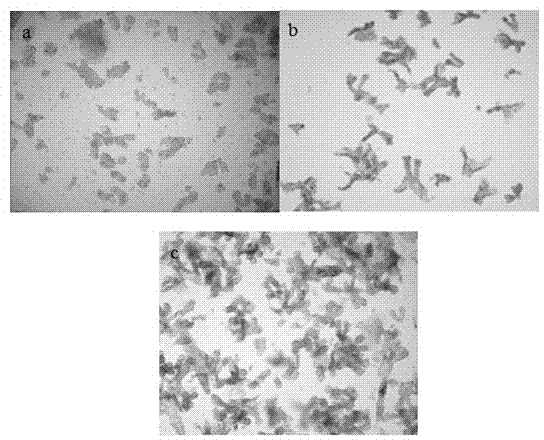Separating liquid for recess of pig intestinal tract and separating method thereof
A separation method and separation liquid technology, which can be applied to vertebrate cells, artificial cell constructs, animal cells, etc., can solve the problems of crypt structural integrity, purity and activity destruction, and achieve the effect of wide application value.
- Summary
- Abstract
- Description
- Claims
- Application Information
AI Technical Summary
Problems solved by technology
Method used
Image
Examples
Embodiment 1
[0038] Example 1 Observation of crypt-villous axis structure
[0039] Anesthetize the 1-day-old Landrace piglet, cut the piglet’s abdomen open after bloodletting, take out the jejunum, wash the contents of the intestinal cavity with ice-cold HBSS, cut the jejunum longitudinally, and then use ice-cold HBSS to clean the intestinal epithelium. Thoroughly wash away the impurities on it; under a dissecting microscope, use tweezers to separate the muscle layer and epithelium of the jejunum, take a small amount of porcine intestinal epithelium and place it on a glass slide to make a pressed sheet and observe it under a microscope. The results are as follows: figure 1 .
Embodiment 2
[0040] Embodiment 2 Screening piglets of suitable age
[0041] This example involves the same method of killing piglets as in Example 1; select 1, 3, 5, 7 and 21 day-old piglets respectively, and get their jejunum to separate intestinal crypts by the following method:
[0042] (1) Take a 15cm jejunum and turn it into an intestinal sac, and wash the intestinal sac with HBSS;
[0043] (2) Ligate one end of the intestinal sac, pour the largest amount of separation solution 1 into the intestinal sac, and then ligate the other end;
[0044] (3) Put the intestinal capsule perfused with separation solution 1 into a 100mL Erlenmeyer flask, add 50mL separation solution 1 (30.0mM Na 2 EDTA-2H 2 O), incubate in an air shaker at 37°C, the shaker speed is 150r / min, and after incubation for 10-20min, the separated fluff is mainly;
[0045] (4) Replace with new separation solution 1 and incubate in an air shaker at 37°C with a rotation speed of 150r / min. After incubation for 15 to 20 minu...
Embodiment 3
[0048] The isolation method of embodiment 3 porcine intestinal crypts
[0049] This example relates to piglet killing method and embodiment 1 is identical.
[0050] 5-day-old Landrace piglets were selected, the jejunum was taken out, the contents were cleaned with HBSS, and the crypts were separated by three different methods. In order to achieve the purpose of providing sufficient nutrition for intestinal tissue and inhibiting crypt anoikis to obtain highly active crypts, the separation liquid used in this example is named separation liquid 2, and its formula composition is: 10.0mM HEPES; 30.0mM Na 2 EDTA-2H 2 O; 0.50mM DTT; 0.25mM BSA; 2.5mM D-glucose; 2.5mM L-glutamine; 0.50mM DL-β-hydroxybutyrate sodium; 10mM Y-27632; 2 PO 4 ; 138 mM NaCl; 8 mM NaCl 2 HPO 4 -7H 2 O.
[0051] Method 1: scraping mucous membrane method
[0052] Take a jejunum of about 10 cm, cut it longitudinally, wash away the impurities adhering to the intestinal epithelium with HBSS, scrape off ...
PUM
 Login to View More
Login to View More Abstract
Description
Claims
Application Information
 Login to View More
Login to View More - R&D
- Intellectual Property
- Life Sciences
- Materials
- Tech Scout
- Unparalleled Data Quality
- Higher Quality Content
- 60% Fewer Hallucinations
Browse by: Latest US Patents, China's latest patents, Technical Efficacy Thesaurus, Application Domain, Technology Topic, Popular Technical Reports.
© 2025 PatSnap. All rights reserved.Legal|Privacy policy|Modern Slavery Act Transparency Statement|Sitemap|About US| Contact US: help@patsnap.com



